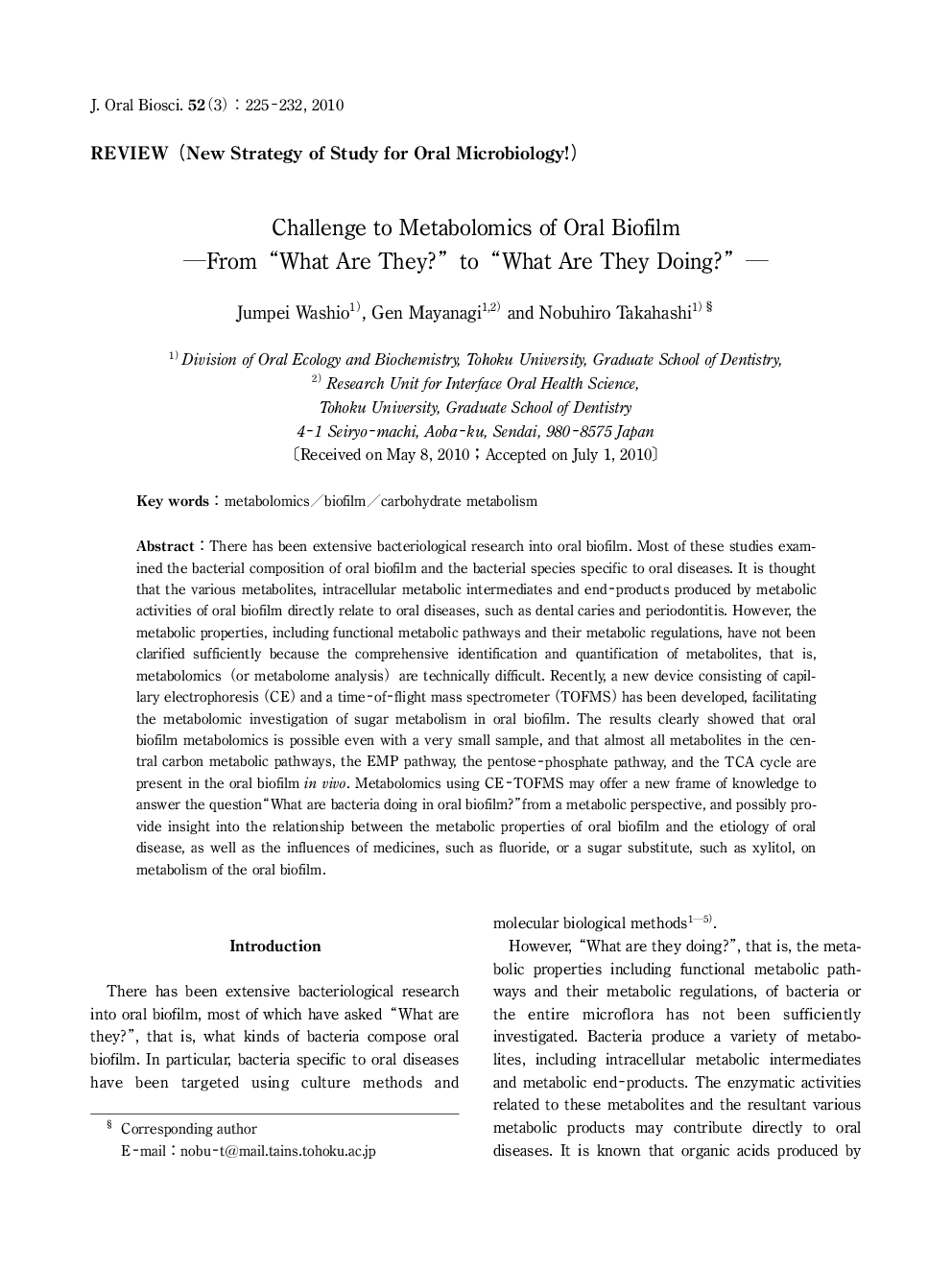| Article ID | Journal | Published Year | Pages | File Type |
|---|---|---|---|---|
| 2777017 | Journal of Oral Biosciences | 2010 | 8 Pages |
There has been extensive bacteriological research into oral biofilm. Most of these studies examined the bacterial composition of oral biofilm and the bacterial species specific to oral diseases. It is thought that the various metabolites, intracellular metabolic intermediates and end-products produced by metabolic activities of oral biofilm directly relate to oral diseases, such as dental caries and periodontitis. However, the metabolic properties, including functional metabolic pathways and their metabolic regulations, have not been clarified sufficiently because the comprehensive identification and quantification of metabolites, that is, metabolomics (or metabolome analysis) are technically difficult. Recently, a new device consisting of capillary electrophoresis (CE) and a time-of-flight mass spectrometer (TOFMS) has been developed, facilitating the metabolomic investigation of sugar metabolism in oral biofilm. The results clearly showed that oral biofilm metabolomics is possible even with a very small sample, and that almost all metabolites in the central carbon metabolic pathways, the EMP pathway, the pentose-phosphate pathway, and the TCA cycle are present in the oral biofilm in vivo. Metabolomics using CE-TOFMS may offer a new frame of knowledge to answer the question “What are bacteria doing in oral biofilm?” from a metabolic perspective, and possibly provide insight into the relationship between the metabolic properties of oral biofilm and the etiology of oral disease, as well as the influences of medicines, such as fluoride, or a sugar substitute, such as xylitol, on metabolism of the oral biofilm.
